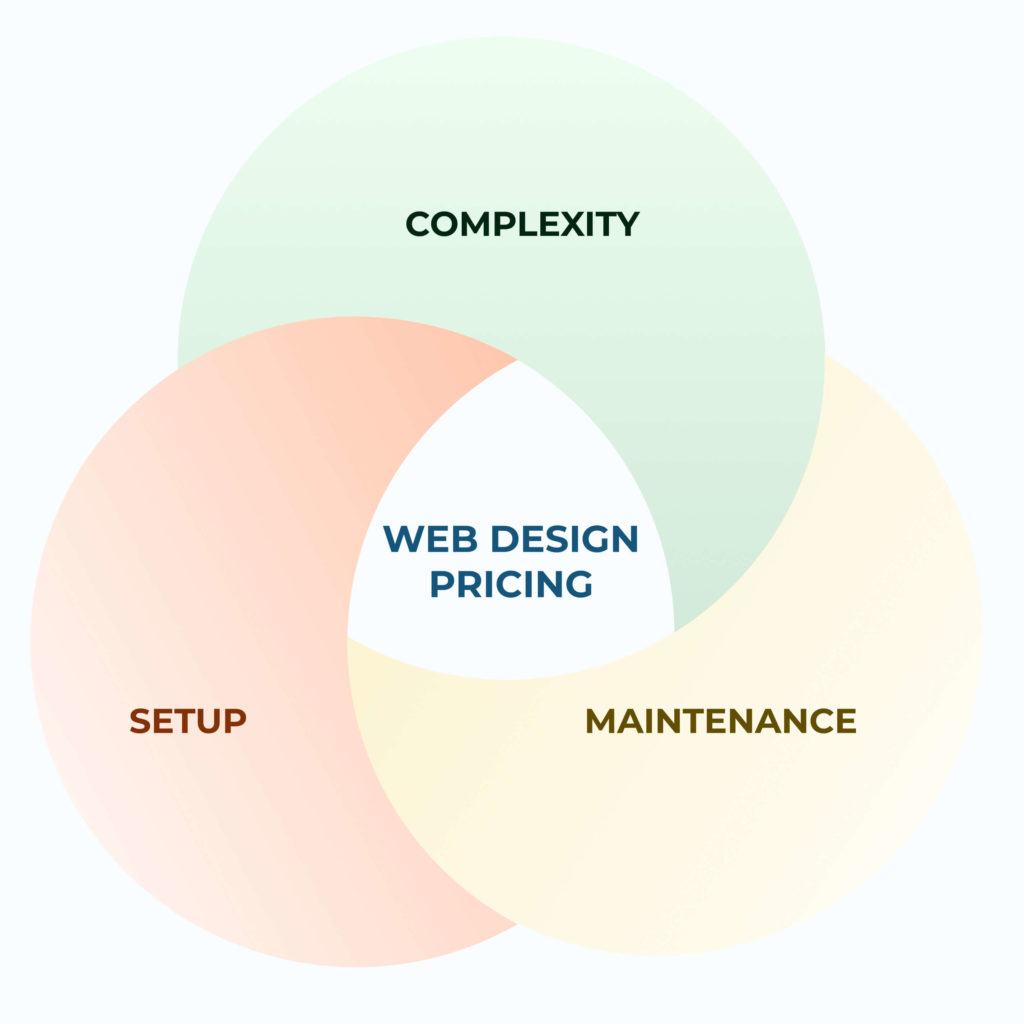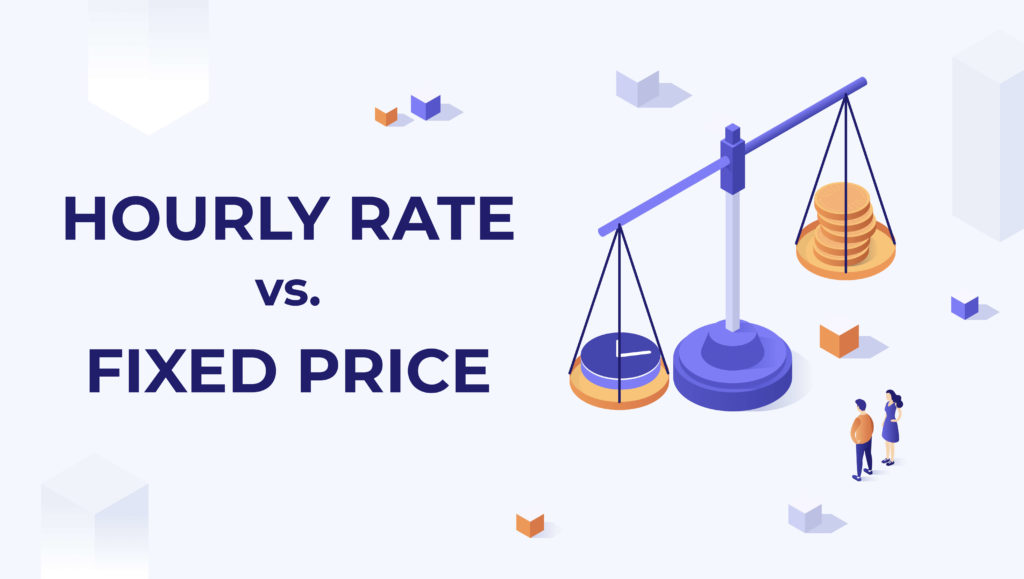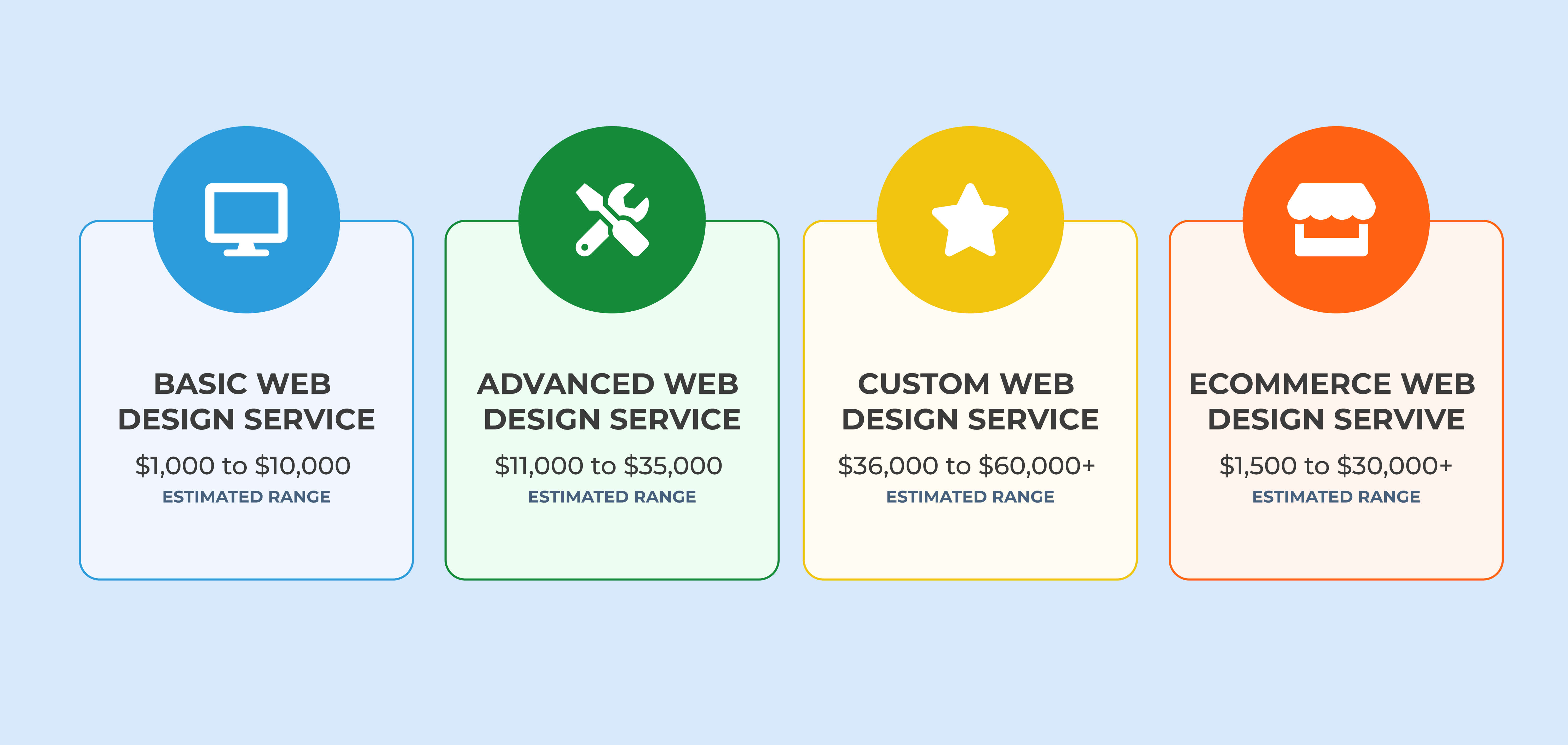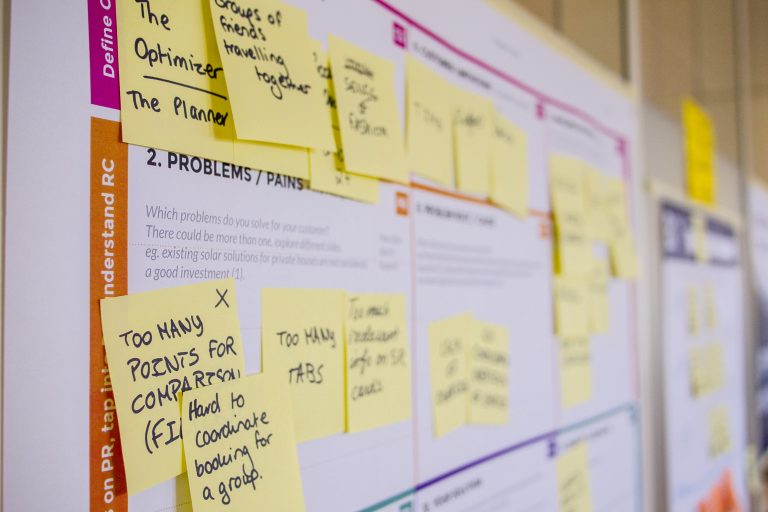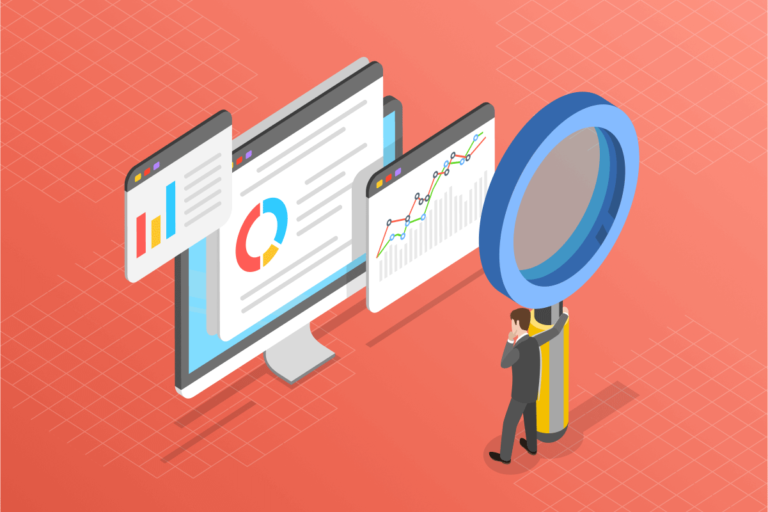“How much do you charge for web design?”
It’s one of the first questions you’ll hear from potential clients looking for web design services.
There’s no right or wrong answer to this question—you’ll hear different answers from different experts. Website design pricing often ranges from $1000 to $60,000 and over, depending on the build and integrations that come with the design.
But how do you know if you’re charging your clients for a fair web design price?
That’s what you’ll learn in this piece.
Use this web design pricing guide to learn how you can set client expectations when it comes to your web design service prices.
1. Identify Factors Affecting Your Website Design Pricing
Before you start throwing figures when selling web design, you need to fully understand what the service entails.
By knowing the factors involved in building a website, you can better explain to clients the value of your website design service.
Let’s break it down into the following: Complexity, Set-up, and Maintenance.
The Complexity of the Project
No two web design projects will have the same scope, which makes website pricing different in every aspect. Your web design quote will vary on the time and resources spent on building the website. This allows you to justify the costs for the expertise and break down the intricate process of your website design service.
Hours Allotted to the Web Design Project
Depending on the scope of the web design project, it may take weeks before clients get to see the output. This means you’ll have to set a clear timeline for the deliverables in the project. The timeline allows you to further breakdown the number of billable hours allotted to building the website.
Design and Development
The crucial aspect of the project falls in the design and development phase. Some clients are satisfied with website themes that don’t require intensive coding and design building on your part.
On the other hand, websites that require extensive customization and additional integrations take longer to complete and require advanced expertise. For this type of complex web design project, it’s only fair to price your service based on the technical skills involved.
Additional Expertise
Website design may involve additional expertise, such as SEO services, graphic design, and content writing. If you’re planning to include these in your website design service packages, make sure you consider the resources, hours, and talent needed so you can add them to your web design pricing.
Website Set-up
This dives into the more technical aspect of the web design project. The platform, domain, and hosting services can affect the costs of building the website, which you can use as a basis on how you price your website design services.
Website Platform
Different website platforms have different levels of complexity, functionality, and features, which are important factors in the overall website design pricing.
- WordPress: This is the most recommended platform for website design and development because it’s free and easy to use. There are free themes and plugins, but if you want the premium ones, you’ll have to pay extra. You’ll also have to pay for hosting. If you’re thinking of building websites with this platform, base your WordPress website design pricing on the additional features that you’ll be needing.
- Website Builders: Wix, Weebly, and Squarespace are some of the most popular website builders out there. The price for these builders ranges from $5 to $60 per month, which makes these a suitable option if your value proposition is affordable web design pricing. Most website builders also come with free themes and hosting so you don’t have to add these in your web design costing.
- Shopify: For ecommerce websites, Shopify is the most recommended platform. Depending on the features your clients want in building a Shopify website store, monthly plans can range from $29 to $299. Consider the features that you’ll be including in your Shopify website design so you can have a fair web design pricing for your clients.
Domain
If you’re using a website builder in developing the sites for clients, most of these already come with free custom domains in their monthly plans. In some cases, you’ll need to pay for the domain annually. The costs of a domain vary—you can get a starter domain for a client for as low as $5 per year.
But if your client wants to have a domain that’s already owned by somebody else, the stakes can get pretty high, so you’ll have to factor this in when setting your web design prices.
Hosting
Most website design services include hosting, with the costs for web hosting ranging from $2 to $100 per month. This will depend on the type of hosting you’ll be providing for your clients’ websites – shared hosting, dedicated hosting, or a virtual private server. The hosting will depend on the site’s performance requirements, so you need to give some thought into how this will fit in your web design pricing packages.
Maintenance
Most clients think that web design is a one-off service that requires no follow-through. Website design and development is always a continuous work and involves consistent maintenance to ensure the website is fully functional after you hand it over to your client.
That’s why part of your web design pricing guide is to know how much to charge for website design and maintenance.
This may involve:
- Plugins: There are free plugins available but if you want to maximize the functionality of your client’s site, you can go for premium ones.
- Troubleshooting: You’ll need to provide troubleshooting in case a problem occurs with your client’s website. Troubleshooting may include security patches, CMS upgrades, backup and storage, and development hours.
Maintenance is important to keep your client’s website secure and up-to-date to industry standard, so make sure clients see the value of this aspect of your website design service.
2. Determine Your Web Design Pricing Structure
There are two ways you can set your web design pricing: fixed rate and hourly rate.
Each has its pros and cons, and we’ll be diving into them so you can determine which pricing structure works best for your agency.
Fixed Web Design Pricing
This is the most common way of pricing website design services. A fixed web design pricing allows you to have a flat rate for the entire project. In most cases, agencies following this pricing structure offer different tiers to match the complexity of the web design project—we’ll get into this more later in the post.
Freelancers and agencies have different fixed rates for their website design services, considering the factors we’ve listed above. The common range for fixed web design pricing is around $300 to $10,000.
What Makes This an Ideal Pricing Structure
- Easier to match client requirements: It’s easier to set expectations from the get-go with clients if they know what’s included in your fixed web design pricing package. When you’re pitching the service, you can instantly tell which package is more suited to the client’s goals and website requirements.
- Emphasis on value: Instead of giving bits and pieces when building their website, having a fixed rate with all the inclusions allows you to focus on the true value of the service as a whole. Because the client knows what you’re charging them for, you can give them pricing equivalent to the value of your work.
- Scalability: Providing custom quotes every time you pitch to clients takes time – time that you could have spent in getting started on designing your clients’ websites. With a fixed web design rate, you can simplify this and already have a template on what can be delivered instead of coming up with ala carte services.
Pro-tip: Make a fixed web design pricing that matches your skill level and resources. List down what you’re capable of doing, so you don’t overpromise and underdeliver on your services.
Hourly Web Design Pricing
Freelancers and those starting an SEO business (and later plans to expand to website design) often charge their services by the hour.
Hourly web design pricing is ideal for small-scale projects. Many starter web design packages work this way because web designers can bill their clients based on the number of hours they’ve put in.
What Makes This an Ideal Pricing Structure
- Focus on what you can deliver: As you’ll be charging clients hourly for their web design work, this allows you to focus on the finer details of the project. This allows you to get things delivered within the expected time frame.
- More control over your minimum acceptable rate (MAR): Setting your website design pricing by the hour allows you to control the most acceptable lowest rate you can allot for the project. If you take the overhead costs and divide them by the hours you can work on a web design project, you can calculate your MAR and use this as a benchmark when pricing your web design services.
While hourly rates can be ideal for a kickoff web design project, it may not be sustainable for the long-term if you’re scaling your web design services later on.
Hourly rates with more clients don’t necessarily mean you’re getting more returns. In fact, it’s limiting your potential revenue.
More than this, hourly rates make your clients conscious of how much time is spent on their web design project. This is a precursor to micromanaging or even scope creep.
So if you’re planning to take your web design services to the next level, you’re better off with a fixed web design pricing than hourly charges.
3. Create Tiers for Your Web Design Service Price
Let’s say you decided to stick with a fixed rate for your web design services. You should have different tiers that you can design into packages to cover different scopes based on your clients’ requirements and the type of website they want to build.
Basic Web Design Service Price
Estimated price range: $1,000 to $10,000
A basic web design package is ideal for small businesses or those looking to establish their online presence with a simple website. You can use this pricing tier for clients who have minimal site requirements – a website with 20 pages at most.
Advanced Web Design Service Price
Estimated price range: $11,000 to $35,000
For enterprises and established businesses, an advanced web design package is their best option. This pricing tier is a step up from the basic level because it covers web design projects with extensive requirements. For instance, you can offer this quote to clients looking to build a corporate website with over 50 pages.
Custom Web Design Service Price
Estimated price range: $36,000 to $60,000+
Custom, modern websites requiring a complex build costs more due to the extensive customizations and additional integrations. For this type of website, you can offer a custom web design pricing so you can plan the work involved based on the scope and specifications of the client.
Ecommerce Web Design Service Price
Estimated price range: $1,500 to $30,000+
Ecommerce websites have a different site structure than the average corporate website. A Shopify website, for instance, may have thousands of landing pages to cover its extensive product selection. Plus, an ecommerce website will require more integrations not found on a corporate website, such as payment gateways and shopping carts.
Pointers When Setting Your Web Design Price Tiers
Pricing can be a tricky aspect of running an agency, especially if you don’t know whether you’re charging too much or too little. You want to get the best returns within your capacity while providing the satisfaction clients look for in a web design service.
Here are a few pointers when you’re setting your web design pricing tiers:
- Keep value in mind: When we say value, it’s not just about the time and web design expertise you can offer. It’s also about the entire experience of working with your agency. Just like when you’re providing an SEO pricing for your clients, don’t send them a quote for work that you can’t deliver.
- Create your own pricing cheat sheet: Whether you decide to publish a website design pricing table on your website or not, it helps to have an internal pricing cheat sheet so your team can know what your website design service covers right off the bat. Plus, you can also send this pricing sheet – with a few tweaks to remove internal jargon and processes – to your clients.
- Look at the competition: It’s the same as when you sell SEO or any other digital marketing service—you have to know what the competition can offer. This allows you to develop your web design value proposition. Do you want to be an agency that can offer affordable web design services? How you structure your web design pricing packages will also depend on this.
One last thing—make sure you have a contract that details the web design service offerings. This allows you to set boundaries on what you can provide for the client. Anything outside of your original web design pricing can be an additional charge. This is to ensure the quality of your web design work remains consistent and avoid unnecessary changes.
Key Takeaways: Value Sets Your Web Design Price
The web design pricing we’ve provided above isn’t set in stone—they’re the estimated range that you can follow when setting your own prices. Ultimately, it’s up to you how you want to price your website design services.
But before you start pricing your website services, let’s do a quick recap:
- Identify the key factors that affect your web design process: This involves the technical requirements, expertise, and resources that go into website design and development.
- Choose your pricing structure: We recommend sticking with a fixed web design rate so you can easily scale the service later on.
- Create tiers to align with the scope and requirements of projects: It’s easier to price your service if you have different levels that match the scope of your client’s web design requests.
Set the pricing that’s appropriate for the value you can offer, and as you get more clients and your business grows, you can increase your rates to align with your capabilities.
